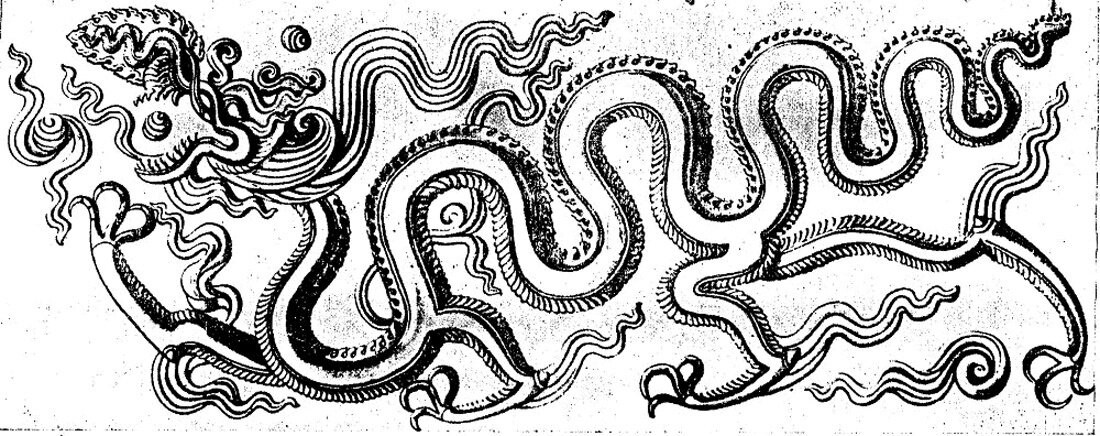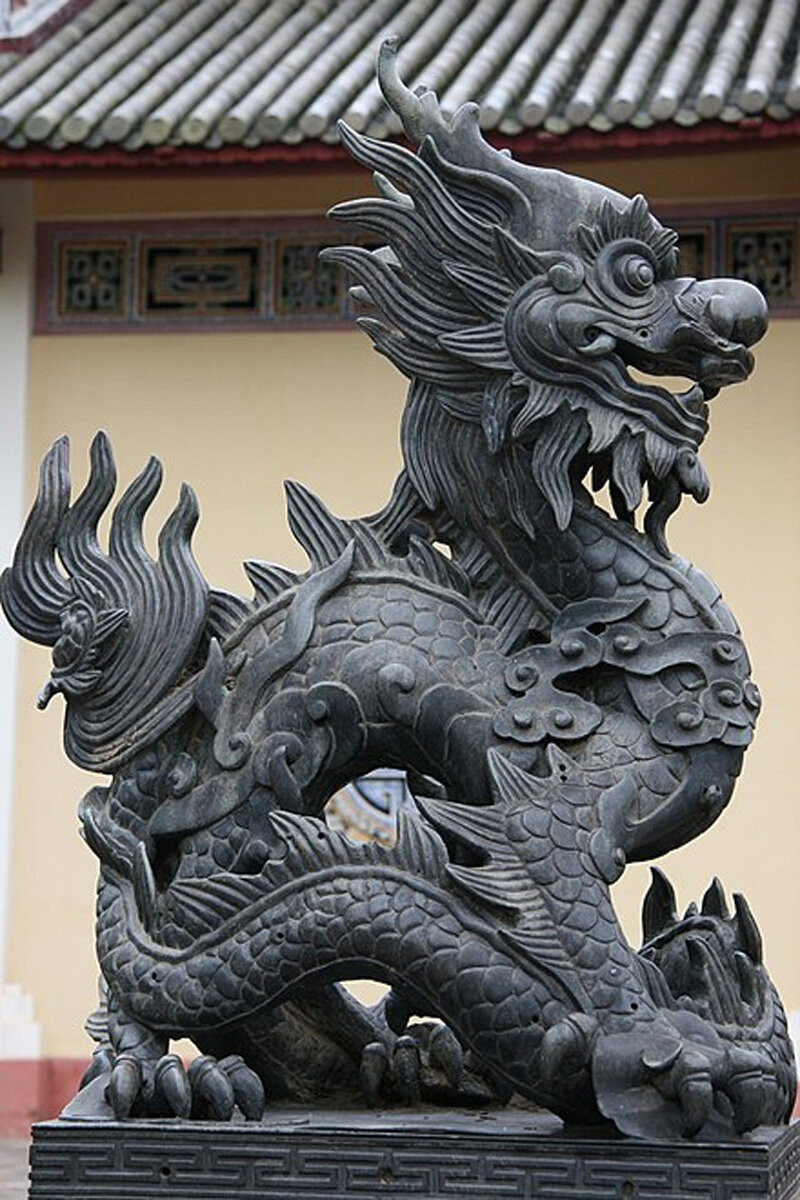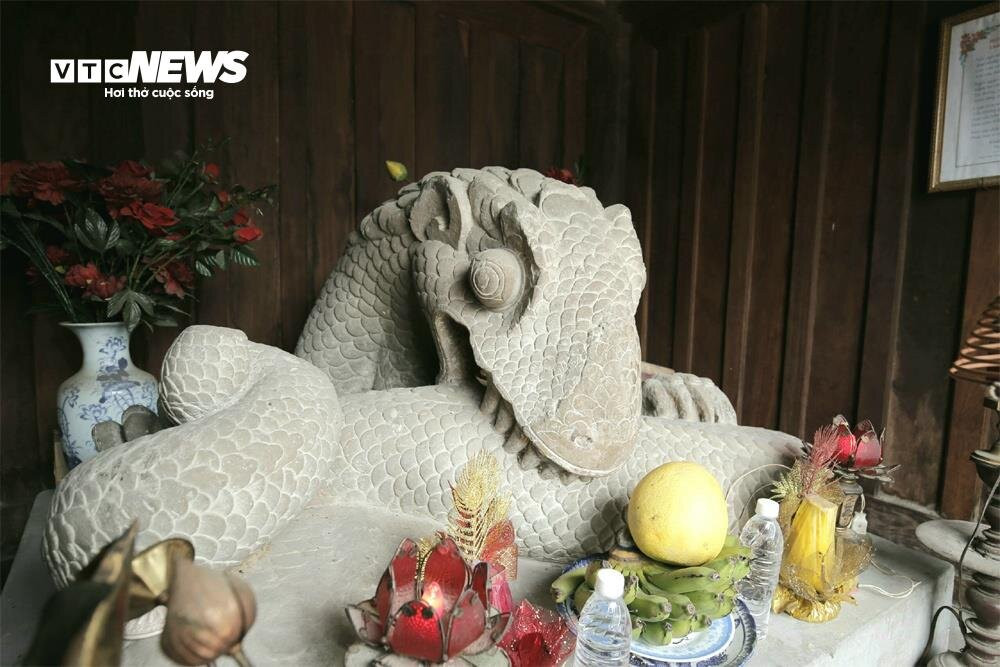If the dragon in many Western cultures is a symbol of evil and close to the devil, then the dragon in Vietnam is always a symbol of flight.
Among the 12 zodiac animals, the dragon is the only animal that does not exist but is created from imagination, with the synthesis of characteristics of crocodile (head, scales, legs) and snake (long body). The dragon lives in the water but can fly in the sky without wings, its mouth can spray water, and it can also breathe fire.
However, the Vietnamese people's consciousness mainly associates the dragon with spraying water to make rain. In fairy talesThe Legend of Ba Be Lake, God punished the people of Nam Mau commune (Ba Be, Bac Kan) by flooding the whole village and in that scene, a large dragon emerged from the water and flew around the commune.
InThe Legend of Muc Lagoon, the two sons of the Water King wanted to save the people of Thanh Dam area (Thanh Tri, Hanoi) from drought so they used ink to make rain. Because they went against the will of heaven, they were punished with death, and their true forms were two dragons with their heads in one place and their bodies in another.

Image of dragon in Ly dynasty
With the most majestic and fierce style among the 12 zodiac animals, the dragon symbolizes strength and domination, so it is associated with the king, creating a class of words with the word "long" such as long bao, long sang, long xa, long gia, long nhan... The word "long" also has a meaning associated with good things such as long mach, long mon, long van...
Vietnamese people are proud to be descendants of the Dragon and the Fairy. The dragon appears in many idioms, proverbs, and folk songs with symbolic meanings that are usually positive:Dragons fly, phoenixes dance; One day leaning on the side of a dragon boat/Is better than nine lifetimes sitting in a fishing boat; Fish meets water, dragon meets clouds…
The image of the dragon changed through the dynasties, reflecting the style and ideology of the ruler. The dragon of the Ly Dynasty was simple with a long, winding body. During the Tran Dynasty, the dragon's body was plumper and stronger, its trunk was shorter, its horns were more diverse, its scales were more numerous, and its claws were shorter and larger.
During the Early Le Dynasty, the dragon's spout was replaced by the nose of a carnivore. The dragon's face became more ferocious, with eyebrows and a thick beard. Its large body was combined with clouds of fire. Its five claws represented the authority of a king. Its characteristic posture appeared: One front paw holding the beard.
Dragons of the Mac Dynasty had two-pronged horns, bulging eyes, a lion's nose, a protruding animal mouth, and feet usually had four claws.
The most prominent feature of the dragon during the Later Le Dynasty was that its beard, mane, and fire clouds were all straight and sharp. The dragon's head was no longer split into ridges but was divided into equal strips. The eyebrows, beard, and elbow hair were flared, and the two mustaches were curved.

Nguyen Dynasty dragon statue
The Nguyen Dynasty dragon basically inherited the dragon of the Later Le Dynasty, with the addition of a dragon to decorate the steps. The curves were no longer regular but only curved into two smaller segments towards the tail. The dragon's forehead was more concave and paled towards the back, the tail extended with sparse, sometimes sharp, feathers.
The most special of the dragon images in the feudal period is the statue of a dragon "biting its body with its mouth and tearing its body with its feet" at the temple of Grand Tutor Le Van Thinh (1038-1096) in Bac Ninh, vividly depicting a state of extreme pain, writhing, sadness, and indignation.

The dragon "biting its own body with its mouth and tearing its own body with its feet" at the temple of Grand Tutor Le Van Thinh
Many researchers believe that the statue represents Le Van Thinh's pain when he was falsely accused of being a tiger who killed the king, but the message is probably even greater than that. The dragon is a symbol of a wise king. If a dragon bites its own body, how can it fly up? Likewise, if a king is not wise and causes talented scholars to be wronged, then he is destroying himself.
If the dragon in many Western cultures is a symbol of evil and close to the devil, then the dragon in Vietnam has always been a symbol of taking off, starting from the legend of King Ly Thai To moving the capital. The dragon in the Vietnamese people's perception is therefore always associated with what develops and lasts.
HA (according to VTC News)